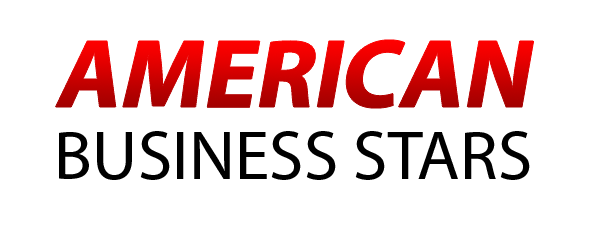Culture fit matters in tech recruitment because it aligns your values and behavior with a company’s core values, which Martyn Bassett Associates emphasizes is important.
This alignment affects your job satisfaction, performance, and how long you’ll stay with the company.
In tech, where teamwork and innovation are key, fitting in with the company culture ensures that you’ll mesh well with the team, enhancing collaboration and reducing conflicts.
Additionally, companies incur high costs from bad hires if there’s a mismatch. Understanding the strategies to assess culture fit could have a substantial impact on your career trajectory, inviting you to explore these strategies further.
Defining Culture Fit
Culture fit refers to the degree to which a candidate’s values, beliefs, and behavior align with the core values and culture of an organization. When you’re on the job hunt, understanding this concept can greatly impact your success in finding a workplace where you’ll thrive. It’s not just about having the right skills or experience; it’s about sharing a common ethos with your potential employer and colleagues.
Think of it as finding your ‘tribe’ within the professional world. Companies cultivate unique environments that reflect their mission, goals, and the way they approach problems. When your style and principles mesh well with this environment, you’re likely to feel more satisfied and perform better.
On the flip side, if there’s a mismatch, you might find yourself struggling to fit in or feeling disconnected from the workplace ethos. This can lead to job dissatisfaction and high turnover rates, which isn’t good for you or the company.
Importance in Tech Recruitment
Understanding culture fit becomes particularly significant in tech recruitment, where the rapid pace and unique demands shape how teams function. You’re not just hiring a set of skills; you’re integrating a new member into a tightly knit ecosystem. This makes it vital to make sure that candidates align well with the core values and behaviors that your company champions.
In tech, where innovation and adaptability are paramount, a mismatch can hinder not only the performance of a single team but can ripple through the entire organization. You want someone who doesn’t just code well but also thrives in the way your team communicates, collaborates, and handles challenges.
Moreover, considering the investment in training and development that tech companies pour into their employees, you’re looking at a high cost of a bad hire both regarding financial resources and time lost. Therefore, understanding a candidate’s compatibility with your company culture is as critical as evaluating their technical abilities.
It’s also about retention. Employees who mesh well with the organizational culture are more likely to stay longer, reducing turnover and fostering a stable, productive work environment. So, when you’re sifting through candidates, remember that their ability to gel with your team is just as essential as their tech prowess.
Impact on Team Dynamics
When you prioritize culture fit in your tech team, you’re setting the stage for enhanced collaboration efficiency. This focus not only reduces team conflict but also boosts creative synergy among team members. These dynamics are essential for maintaining a productive and innovative tech environment.
Enhancing Collaboration Efficiency
Optimizing collaboration efficiency greatly enhances team dynamics, enabling smoother project flows and better overall outcomes. When you’re part of a team where everyone meshes well, you’ll find that sharing ideas and working together on solutions becomes faster and more intuitive.
This synergy isn’t just about getting along socially; it’s about aligning on professional wavelengths. You’ll notice that meetings are more productive and less about resolving misunderstandings or clarifying miscommunications.
As a result, projects move forward without unnecessary delays, and everyone feels more invested in the success of the team. This kind of environment not only boosts your daily work satisfaction but also drives innovation, as everyone is encouraged to contribute their best ideas freely.
Reducing Team Conflict
Building on enhancing collaboration efficiency, effectively managing team conflict further strengthens group dynamics and guarantees smoother interactions. When you prioritize culture fit during recruitment, you’re not just filling a vacancy; you’re strategically selecting individuals who naturally align with your team’s ethos, reducing instances of miscommunication and friction. This proactive approach minimizes disruptions and nurtures a harmonious workplace. Consider these critical pointers to manage and reduce team conflict:
- Promote open communication channels
- Encourage regular feedback sessions
- Foster respect for diverse viewpoints
- Implement conflict resolution training
- Establish clear role expectations
Boosting Creative Synergy
By prioritizing culture fit, you can greatly enhance creative synergy within your team, boosting overall dynamics. When team members align with the core values and vision of your company, they’re more likely to collaborate effectively. This alignment doesn’t just smooth out day-to-day interactions; it sparks innovation.
You’ll see ideas flowing more freely as each member feels understood and valued. They’re not just working on individual tasks; they’re contributing to a shared goal. This sense of belonging fosters a creative environment where brainstorming becomes second nature, and problem-solving is a team sport.
So, when you’re hiring, don’t just look at skills and experience. Consider how a candidate will contribute to and enhance this creative ecosystem.
Secure top tech talent. Partner with Martyn Bassett Associates now!
Enhancing Employee Retention
Understanding how effectively a potential employee fits within your company culture can greatly enhance retention rates. When you guarantee that your new hires align well with the core values and ethos of your organization, you’re not just filling a vacancy; you’re building a committed team member who’s more likely to stay for the long haul. This alignment reduces friction, fosters engagement, and bolsters a sense of belonging, all of which contribute to reduced turnover.
Here are several key benefits of cultural fit that directly impact employee retention:
- Increased job satisfaction: Employees who resonate with the organizational culture often feel more satisfied with their jobs.
- Enhanced teamwork: Shared values lead to better collaboration and less conflict among team members.
- Stronger commitment: Employees are more committed to companies where they share common goals and values.
- Improved performance: When employees fit well culturally, they are more motivated, which often leads to higher performance.
- Lower stress levels: Cultural alignment can reduce workplace stress, making daily tasks more enjoyable.
Strategies for Assessing Fit
To evaluate cultural fit during the recruitment process, start by clearly defining your company’s core values and ethos. Make sure you’ve got a solid understanding of what behaviors and attitudes are prized at your organization. Once you’ve laid this foundation, incorporate these values into every stage of your hiring process.
Next, tailor your interview questions to reflect your company’s culture. Ask candidates about their previous experiences with teamwork, conflict resolution, and adaptability to see how they align with your environment. You might also want to include scenarios-based questions that reveal how a candidate would handle situations specific to your company’s day-to-day challenges.
Behavioral assessments can be incredibly revealing. Use these tools to gauge how potential hires might fit into your team dynamics. Don’t just focus on what they can do technically; pay attention to how they approach problems and interact with others.
Lastly, consider introducing candidates to a variety of team members during the interview process. This isn’t just about evaluating their social skills—it’s also an opportunity for your team to provide feedback on how they feel the candidate might mesh with the group.
Remember, you’re not just hiring skills; you’re hiring a person who needs to thrive within your specific corporate culture.
Future of Workplace Culture
As you look ahead, consider how evolving cultural expectations will shape the tech industry. The rise of remote work has fundamentally altered how you connect and collaborate. Additionally, placing a stronger emphasis on diversity and inclusion has become a critical priority for sustainable growth.
Evolving Cultural Expectations
How are evolving cultural expectations shaping the future of workplace culture in the tech industry? As you navigate your career, it’s clear that the cultural landscape of tech companies is rapidly transforming. Traditional models are being reconsidered in favor of environments that support diversity, continuous learning, and employee well-being. These shifts reflect broader societal changes and the tech industry’s response to new generations entering the workforce.
Key changes include:
- Increased focus on diversity and inclusion
- Greater emphasis on work-life balance
- Demand for continuous learning opportunities
- Rise of employee autonomy
- Environmental and social responsibility initiatives
These trends are setting the stage for a more dynamic and inclusive workplace culture, directly impacting how companies attract and retain talent.
Remote Work Impacts
Remote work reshapes how you experience company culture, fostering flexibility but challenging traditional collaboration norms. You’re no longer bound by office walls, which means you can manage your time and workspace. However, it’s not all smooth sailing. The lack of face-to-face interaction can lead to miscommunications and a sense of isolation. You might find it harder to bond with your team or get quick answers to pressing questions.
Moreover, the blur between home and work life requires you to set clear boundaries to prevent burnout. Embracing tools and strategies that enhance virtual communication is essential. They guarantee that while you’re physically apart, you remain connected, engaged, and aligned with your team’s goals and the broader company culture.
Diversity and Inclusion Priorities
Building on the importance of robust virtual communication, focusing on diversity and inclusion is crucial to shaping a future-ready workplace culture. You need to guarantee that your tech team reflects the world around you, fostering an environment where innovation thrives through diverse perspectives. Here’s how you can prioritize diversity and inclusion:
- Recruit from a broader range of schools and bootcamps.
- Implement bias training for all hiring managers.
- Establish mentorship programs for underrepresented groups.
- Set clear diversity goals and track progress.
- Promote an inclusive culture through regular team-building activities.
These steps not only enhance your team’s creativity and problem-solving abilities but also strengthen your company’s reputation as a progressive and attractive place to work.
Frequently Asked Questions
How Does Culture Fit Vary by Country or Region?
Culture fit varies by country or region because each has unique values, work ethics, and social norms. You’ll find that adapting to these differences is essential for successful integration and job satisfaction.
Can Culture Fit Evolve Over Time in a Company?
Yes, culture fit can evolve over time in a company as you adapt to new market demands, introduce diverse team members, and update your company’s goals and policies to stay competitive.
What Are Common Misconceptions About Culture Fit?
You might think culture fit means similar personalities, but it’s really about aligning with core values and vision. It’s not about conformity; diversity in thinking and background can enhance a company’s culture.
How to Address Culture Fit in Remote Teams?
To bridge the digital divide, you’ll need to foster strong communication and shared values. Regular virtual team-building activities and clear, consistent messaging help reinforce a cohesive culture among remote team members.
Is Culture Fit Equally Important in Startups and Large Enterprises?
Yes, culture fit is essential both in startups and large enterprises, but its impact varies. In startups, you’ll feel its influence more directly, while in large firms, it shapes broader team dynamics.
Conclusion
As you navigate the evolving tech landscape, remember that culture fit isn’t just about blending in—it’s about standing out in the right ways. While you aim for innovation, don’t overlook the harmony of your team dynamics. Balancing cutting-edge skills with cohesive workplace culture not only enhances retention but propels your company forward. Embrace this dual focus, and you’ll see that the future of workplace culture isn’t just about adapting; it’s about thriving.
Secure top tech talent. Partner with Martyn Bassett Associates now!










































